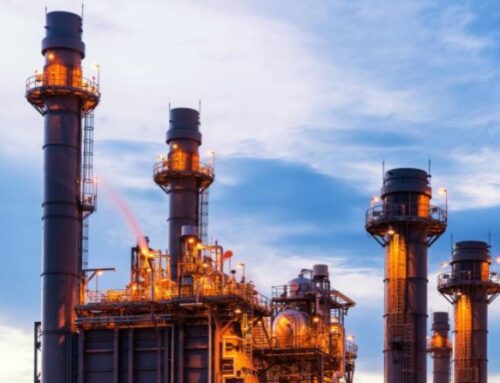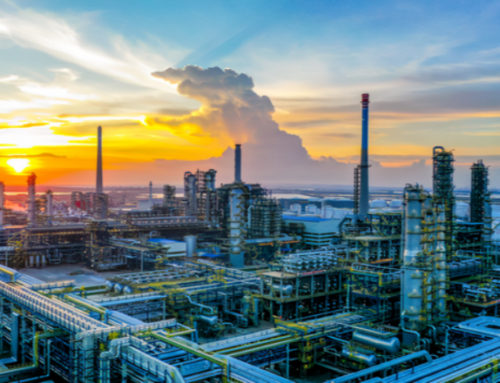On the morning of April 10th, the propane dehydrogenation catalyst series product project of Yingkou Xiangyang Catalyst Co., Ltd. started smoothly. This project not only marks the company’s further expansion in the field of chemical catalysts, but also reflects the development dynamics of the propane dehydrogenation industry in the current market environment.
1. Process analysis: Core of propane dehydrogenation technology
Propane dehydrogenation (PDH) is a process in which propane is dehydrogenated to produce propylene and hydrogen gas under pressure of 0.05-3.0MPa, temperature of 500-650 ℃, and suitable catalyst action. Among numerous olefin production processes, PDH is one of the rapidly developing short process processes in the past decade. The commercial catalyst systems are mainly divided into two categories: Pt based and Cr based. The entire reaction belongs to a strongly endothermic reversible reaction. According to the principle of chemical equilibrium, high temperature and low pressure conditions are conducive to the forward reaction and promote the generation of propylene.

From the perspective of the industrial chain, the PDH process and products are relatively simple. Dehydrogenation reaction is carried out using propane as raw material to produce propylene and hydrogen gas as a byproduct. Acrylic, as a key raw material for downstream chemical products, is widely used in the production of polypropylene, epichlorohydrin, acrylic acid, butanol, etc. The by-product hydrogen, usually purified and processed, is mainly used for hydrogenation reactions in refineries and other hydrogenation units, or as fuel. Nowadays, it is gradually emerging in the field of hydrogen fuel cell vehicles and has become one of the important sources of hydrogen supply. Currently, over 30 sets of propane dehydrogenation units have been put into operation in China, with a total production capacity exceeding 20 million tons. Enterprises such as Jinneng Technology, Satellite Chemistry, Wanhua Chemical, and Zhongjing Petrochemical occupy important positions in this field.
2. Market Insights: Dynamic Game of Supply and Demand Prices
Currently, the market for propane dehydrogenation industry presents a unique trend. The pace of resuming work and production is relatively slow, and the overall market is in a weak operating state.
In terms of price, the monthly average price of propane in China this month is 5163 yuan/ton, a decrease of 1.19% compared to last month. The Spring Festival holiday has had a significant impact on the domestic propane market, resulting in poor market performance. After the holiday, with the gradual recovery of domestic logistics transportation, the upstream shipment situation has improved, but the overall market support is still weak, and prices have only slightly increased. In the latter half of the year, domestic Shenghong Refining converted propane to self use, leading to tight market resource circulation and improved factory shipment conditions. The fundamental support of the propane market strengthened, and prices continued to rebound. The average price of propylene market this month is about 6735 yuan/ton, and prices in various regions are showing a downward trend.

In the post holiday market of February, due to the reduction of on-site resource supply and the increase in downstream factory resumption of work and production, the propylene market quotation slightly increased, but the downstream acceptance gradually decreased. At the same time, the integrated facilities of domestic factories have released propylene, improving resource supply and causing a weak market downturn. In mid month, propylene prices hit bottom and rebounded, driven by downstream demand, but with limited support. In the latter half of the year, the demand for propylene in the market weakened, and most demanders maintained their essential procurement. Factories adjusted their quotations based on their own inventory, causing the market situation to fall again.
In terms of production, the domestic refinery propane commodity volume in February was about 185800 tons, slightly lower than the previous month, mainly due to the stagnation of industry production caused by the Spring Festival holiday. The domestic propylene production was about 4.471 million tons in February, also slightly lower than the previous month. The progress of resuming work and production in domestic propylene factories is relatively slow, and the capacity utilization rate remains low, resulting in a decrease in resource supply. In terms of device dynamics, as of February 27th, the weekly production profit of domestic PDH devices is about -336 yuan/ton, and the weekly average operating rate of domestic propane dehydrogenation devices is 72.82%. Overall, the propane dehydrogenation industry faces many unstable factors in the dynamic game between market supply and demand and prices.
3. Enterprise Layout: Leading by Giants and Diversified Expansion
The layout of enterprises in the propane dehydrogenation industry has a profound impact on the development pattern of the industry. Yingkou Xiangyang Catalyst Co., Ltd. actively lays out in this industry. Its propane dehydrogenation catalyst series project has a total investment of 260 million yuan, covers an area of 26000 square meters, and has a total construction area of 10000 square meters. The project will construct two production lines, one is a platinum based production line with an annual output of 1000 tons of propane dehydrogenation catalyst, and the other is a chromium based production line with an annual output of 1000 tons of propane dehydrogenation catalyst. Their products can replace imported catalysts and reach the international leading level.
Other companies are also actively expanding their presence. China Chemical Engineering Corporation announced on February 20 that the company’s contract amount for January 2025 is 30.94 billion yuan, of which Hebei Haiwei Lanhang Chemical’s 1 million tons/year propane dehydrogenation project is expected to have a total investment of 7664.98 million yuan. The construction site is located in Bohai New District, Cangzhou, covering an area of 1342 acres, mainly to build a propane dehydrogenation unit with an annual output of 1 million tons and its supporting facilities, using propane from oilfield associated gas as raw material to produce propylene.
Zhongjing Petrochemical is located in the Zhongjing Petrochemical Science and Technology Park in Fuqing. During the Spring Festival, more than 200 employees stayed at their posts and worked hard to debug two new units, one with an annual output of 1 million tons of propane dehydrogenation and one with an annual output of 1.5 million tons of high-performance polypropylene, to ensure smooth production before April. Zhongjing Petrochemical’s annual production capacity of 1 million tons of PDH unit and 1.2 million tons of loop polypropylene unit are both the largest in the world. After the new production capacity is put into operation, the company’s annual production of propylene and polypropylene will reach 2.8 million tons and 3.8 million tons respectively, further consolidating its position as the “world’s largest single plant production base” in the propylene and polypropylene fields.
4. Opportunities and challenges coexist in the propane dehydrogenation industry
From a policy and environmental perspective, the Ministry of Industry and Information Technology and three other departments jointly issued the “Implementation Plan for Accelerating the Application of Clean Low Carbon Hydrogen in the Industrial Sector”. In the plan to accelerate the replacement of clean low carbon hydrogen, it is clearly proposed to promote the large-scale purification of industrial by-product hydrogen such as coke oven gas, chlor alkali tail gas, propane dehydrogenation, ethane cracking and dehydrogenation according to local conditions, and support eligible enterprises to install carbon capture and utilization devices in fossil fuel hydrogen production facilities. The national “14th Five Year Plan for Industrial Green Development” also explicitly requires the petrochemical industry to reduce energy consumption and pollutant emissions, which requires PDH enterprises to invest more funds in upgrading environmental protection facilities.
Due to the strong endothermic nature of PDH reaction, it needs to operate at high temperatures of 600-800 ℃, resulting in high energy consumption and carbon emission intensity. With the advancement of the “dual carbon” target, enterprises need to reduce carbon emissions through process optimization (such as hydrogen combustion heating) or carbon capture technology, but the cost of technological transformation is relatively high. Some regions have imposed restrictions on high pollution processes and encouraged enterprises to adopt domestically produced environmental protection technologies (such as the hydrogen dehydrogenation process developed by Tianjin University), but the maturity and large-scale application of the technology still need time to improve.
From the perspective of market demand, the demand for propane dehydrogenation technology in emerging markets is growing rapidly. Especially in Asian countries such as China and India, the demand for propylene continues to rise, driving the demand for propane dehydrogenation technology. However, at the same time, China’s PDH industry is also facing the risk of overcapacity, and the operating level has been declining. The average operating rate of PDH facilities in China exceeded 90% in 2020, dropped to around 78% in 2021, further decreased to around 72% in 2022, and decreased to around 65% in 2023, with an estimated 67% in 2024. Affected by shrinking profits, some PDH projects have abandoned planning or postponed production, but PDH remains the main force for expanding propylene production capacity in the future.
In the trend of industrial development, the concentration of industries will continue to increase. At present, there are still over 30 PDH units under construction in China, with production capacity distributed in East China, Shandong, Northeast China, Central China, and South China. According to statistics, the domestic PDH production capacity is expected to reach 40 million tons by 2030, accounting for about 40% of the total propylene production capacity. Top enterprises will expand their market share through economies of scale and technological advantages, while small and medium-sized enterprises may face elimination under cost and technological pressures.
In terms of extending the industrial chain, 90% of the newly added PDH projects are equipped with polypropylene (PP) and other devices, forming a “propane propylene polypropylene” closed loop to enhance the enterprise’s risk resistance ability. In the field of hydrogen energy development, the by-product hydrogen gas from PDH units (approximately 2.94 tons/hour of hydrogen production per 600000 tons/year) will be widely used in fuel cells, chemical hydrogenation (such as synthetic ammonia) and other fields in the future, becoming an important source of hydrogen energy supply.
Based on the above situation, PDH enterprises can shift their market focus more towards Southeast Asia and expand overseas markets in the future. At the same time, we should vigorously promote the localization process of propane raw materials. Currently, the domestic propane production is less than 200000 tons per year. If it can be increased to 1 million tons per year, the shortage of raw materials will be greatly alleviated, thus achieving sustainable development of the propane dehydrogenation industry in a complex market environment.
Article source: www.xianjichina.com
M&J International Trading Co., Ltd






Leave A Comment